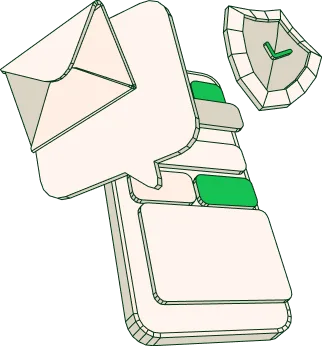Why should I make a business plan?
Making a business plan or business plan? As an independent professional, you need this to check whether your ideas are feasible. Perhaps even more importantly: you can convince financiers and suppliers of the feasibility of your plans. Especially as a starting entrepreneur, it is advisable to re-examine your business plan every three years. This way you can check whether your plan is developing as expected.
Making a business plan with the Business Model Canvas
Making a business plan using a tool such as the Business Model Canvas (designed by Alex Osterwalder) works ideally. The model (PDF) is very clear and consists of nine building blocks. The bottom consists of the costs and revenues. The value proposition is central, the distinctive value that you offer your customers.
To the left of this, space is reserved for how you create this value: which partners, which (help)sources you use and which activities you undertake. On the right side is who you sell your product or service to, what the delivery looks like and maintaining the relationships. The nine separate building blocks in brief:
1. Customer segments
Determining the right target group is essential. Map out which specific customers you want to serve and investigate what the needs of this target group are. This is also known as segmenting the market because you define the target group. Is the focus on men or women, on wealthy retirees or middle class people, the entire country or a specific province?
Also consider education, place of residence, religion and socio-economic background. Specify the wishes of the target group. If there is no demand for your products or services, you do not sell anything. As soon as you know what the potential customers need, you can adapt your services to this.
2. Value proposition
The value proposition, or what is the distinctive or added value that you offer to the customer? Define in what you actually differ from the competition. So determine in which market your company operates and specify what you offer. The products or services must first be functional, but at the same time better or more extensive than the services or products of the competition.
Your product or service must be attractive to use, offer financial benefit and the customer must attach value to it, so that he comes back to you. An important part of this is the service that you offer, it is a crucial factor that contributes to customer satisfaction.
3. Customer relations
Look at how you are in contact with customers. If you have a broad customer base, make a distinction between the wishes of these customers (buyers who buy in bulk or a private individual who orders one product) and look at the return that you can achieve on each of these customer groups. Invest in the relationship with these customers.
4. Channels
These are the (sales) channels with which you come into contact with customers. In this box in the model, you describe, among other things, the marketing and distribution strategy. How do you keep the target group informed of the offer? In what way can they obtain your offer, in a store or online? Combine the offline and online channels as much as possible.
5. Revenue model
With the revenue model, you make clear where your income comes from. Not only now, but also in the future. It is one of the pitfalls of starting entrepreneurs. It is about creating added value, usually money, but this can also be pleasure or satisfaction. In a revenue model, you write down how you are going to achieve this. How many customers you need, how much turnover you need to make a profit, how you earn from customers and whether you have determined the prices correctly, for example.
6. Resources
Resources (key resources) are the most important company resources that are needed to realize the value proposition. This can include physical resources (company equipment such as a computer or a camera), intellectual resources (a patent or a brand) and human resources (staff). It requires an investment, which can be financed in various ways.
7. Core activities
What are the most important core activities of your company to create the value proposition? Make clear how you add value to the quality of your product, to maintaining customer relationships and to acquiring new customers.
In terms of product, this is about developing a high-quality product that is better than the
competitors. Be service-oriented and invest in the customer relationship. Not only recruiting new customers, acquisition, is important for starting entrepreneurs, but retaining customers is, certainly in times of recession, at least as important.

8. Partners
In this part of the model, describe, if applicable, which partnerships are important to be successful and to be able to grow and be competitive. By describing which strategic partners you can use, you know exactly which knowledge and expertise is needed to complement you. For example, a copywriting agency and a video agency can work together excellently to create interactive websites.
9. Cost structure
Research how the cost structure in your company is structured. After you have described the eight building blocks above, it is quite easy to determine the most important costs. Which costs are fixed (company premises, machines), which are variable (purchase of products)? See which company resources are expensive and where there is still (scale) advantage to be achieved, or where savings are possible.
- Find a suitable assignment
- Place a bid
- Simple contract processing
- Getting Started
- Fast disbursement
